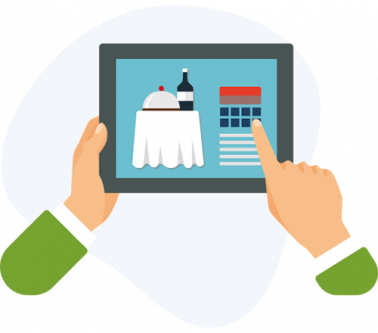Do you feel like your current marketing strategy could use a boost? Let us introduce you to inbound marketing, an ideal option for attracting your prospects in a new, exciting way.
Inbound Marketing: A Sure Bet for Attracting New Prospects
Inbound marketing is the term we use for incoming marketing. As a strategy, it offers an alternative approach to traditional marketing. The goal is to attract prospects, with no need for solicitation. How do you do it? By creating quality content that turns interested consumers into customers. In other words, this method brings consumers to you, without you having to persuade or force them. It works because you give them what they want instead of burdening them with what they don’t want.
Since customers come to you, it also means that they are better informed, more demanding and may tend to be less loyal.
Why should I opt for an inbound marketing strategy?
What do you do before you make a major purchase? Do you search for information on the Internet? Do you read reviews written by other buyers? If you answered yes to these three questions, you make up one of the 81% of consumers who conduct research online before they make a purchase. The reality is, consumers have become proactive. The purchase decision process is often well thought out. The goal is to appear where your Internet users will go to do their research and show them that your product will exceed their expectations.
Another great reason to opt for an inbound marketing strategy is that it is less expensive than a more traditional strategy. And when done correctly, it will generate better quality leads for your company.
The Levers of Inbound Marketing
There are a number of tools you can use to attract your prospects. Here are a few of the most common strategies
- SEO
- Starting a Blog
- Online marketing platforms, such as social networks and newsletters.
Inbound Marketing’s 4 Key Steps
To implement this strategy, there are some important steps you need to follow. These steps make up what is known as a “conversion tunnel,” also sometimes called a “conversion funnel.”
-
Attract
This entails a crucial step and it’s based on traffic acquisition. In this step, the key to success lies in producing interesting content that will attract your Internet users. Here’s where the three levers we presented to you earlier will come into play. To effectively attract consumers, you have to put your eggs in all the digital channel baskets. This means putting yourself out there on social media, blogs and everything the online world has to offer. When you deploy a multi-channel inbound marketing strategy, you multiply your chances of your efforts bearing fruit. Note that SEO is also very important at this stage.
Consider taking the time to study your target audience so that you can best adapt your content and your general communication to your prospects. The goal is to find out what they expect from you and use this knowledge to acquire traffic that is more likely to convert customers.
-
Convert
Once you’ve attracted prospects, your goal is to convert them into leads. To do so, you will need to retrieve data, such as a name, phone number or email address. You need some form of contact info so you can stay in touch with your potential customers. Here are a few examples of methods you can use to retrieve information about your prospects.
Click-to-Action (CTA) Buttons
Also known as “call-to-action” buttons, these are small, eye-catching graphics that the user is invited to click on.
Forms
You can include these on different pages of your website, but don’t forget to include at least one of them on your “contact” page.
-
Sell
Potentially the most complex and time-consuming step, this consists of accompanying the prospect through to the purchase decision and transforming them into a customer. To do this, you must keep in touch with them via the information you retrieved in the Convert step. Obviously, the specifics and length of this process will depend on your sector and target audience. To keep in touch, you have several available options, but the best one is almost certainly emailing.
-
Retain
Once you’ve converted your prospects into customers, this is no time to coast! For the final step in the conversion tunnel, you’ll want to inspire your customers to stay with you long term. To accomplish this, you need to build loyalty and commitment. Doing so will help you improve your online reputation on the Internet and gain notoriety. Loyal customers will also save you money. This is because your most loyal customers make up the largest portion of your company’s profit. It is much more expensive to find new customers or convert a prospect than it is to simply retain a customer who already loves your products and services. So remember to keep in touch with your consumers well after they make their first purchase.
 Tip
Tip
Inbound marketing has a strong impact on your ROI (return on investment)




